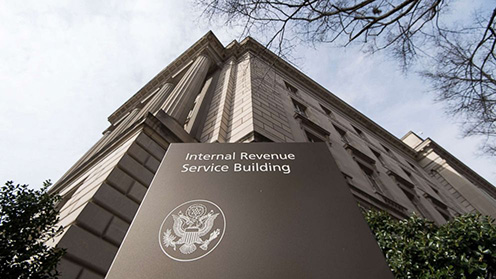IRS Deploys AI Tools to Combat Emerging Tech’s Role in Fraud Schemes
- IRS is prepped for the 2025 tax season
- The organization has had a boost in number of personnel
- The IRS plans to fight AI with AI
The 2025 tax season is now upon us, and we all know what that means...fraudsters are ready to pounce on billions of dollars in tax refunds.
In 2023 to 2024, the Biden administration set out to boost IRS headcount by 30,000 employees. This hiring spree came with five objectives:
- Help taxpayers properly fill out their taxes
- More quickly address taxpayer issues
- Expand enforcement for those with complicated filings and high-dollar non-compliance
- Boost technology and data
- Attract and retaining a highly skilled, diverse workforce

Unfortunately, these 30,000 employees cannot all be dedicated to address the fraud problem.
The IRS is facing a growing challenge as criminals leverage artificial intelligence (AI) tools to launch more sophisticated and high-volume fraud schemes. According to Jarod Koopman, the IRS Criminal Investigations' executive director of cyber and forensics via The Federal News Network, online payment fraud now exceeds $360 billion annually, and check fraud is "skyrocketing."
What used to take a significant amount of effort, going into some type of a social media-type exploit or a hack, they can now do this with AI that's much more efficient, much more effective, and certainly much more volume at high speed,
Fire With Fire: Leveraging AI
To combat these AI-powered fraud schemes, the IRS is turning to – AI tools. The agency will deploy AI to more effectively analyze the vast amounts of operational data and third-party information at its disposal, allowing it to quickly detect patterns and identify potential fraud.
IRS enforcement operations, more broadly, are trying to keep up with emerging technology’s impact on criminal financial activity. AI tools are accelerating the development of deepfake schemes, as well as misinformation and disinformation campaigns that led to fraud.

As Koopman explained:
AI has certainly made us much more effective and efficient in sifting through that to find patterns, to identify fraud methodologies or typologies, to identify current threats or vectors that might be red flags of issues that we were not aware of prior.
Stolen Refund Checks
While these AI technologies can assist in stopping fraudsters from using stolen identities to claim tax refunds, it does not stop fraudsters from stealing refund checks and altering or counterfeiting them. According to the IRS, 8ight out of ten tax refunds are received via direct deposit -- meaning that two out of ten, or 20% of tax filers, still choose to receive their tax refund via check. With over 100M filing taxes, there is an excess of 20M+ in refund checks for fraudsters to prey on.

This is where financial institutions need to step up and deploy their own AI technologies to prevent altered and counterfeited refund checks from hitting their accounts. To do this, FIs need to deploy image forensic AI to analyze the image of the refund check to detect alterations in the payee. By utilizing check stock verification to measure alignment of payee and writer verification to detect issues with font styles, FIs can ensure that the refund check is legitimate.
Additionally, FIs should encourage their customers to be vigilant and monitor their refund check status. The IRS provides a handy online tool to check refund status here.